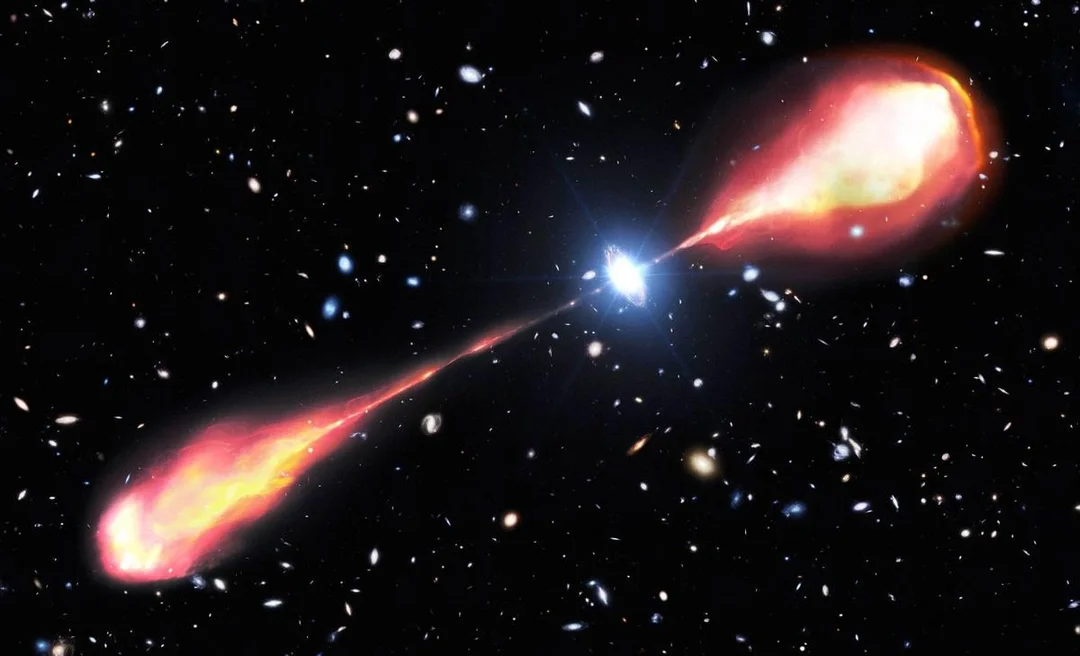
Cosmic Record Broken: Astronomers Discover Largest Black Hole Jet, Stretching Three Times the Size of the Milky Way
In a groundbreaking discovery that is reshaping our understanding of the early universe, astronomers have identified the largest and most ancient radio jet ever observed. Emitted by a quasar named J1601+3102, this colossal structure extends an astonishing 200,000 light-years – nearly three times the diameter of our own Milky Way galaxy. This finding offers a unique window into the early cosmos when the universe was just 1.2 billion years old, and it challenges previous assumptions about the power needed to create such massive jets.
The research, detailed in The Astrophysical Journal Letters, was led by Anniek Gloudemans, postdoctoral research fellow at NOIRLab. The team utilized the LOFAR (Low Frequency Array) telescope network, a pan-European system that acts as a giant virtual dish, to capture the faint radio signals emanating from this distant quasar.

What makes this discovery particularly intriguing is the comparatively *modest* size of the black hole powering the jet. With a mass of approximately 450 million solar masses, it's far from being the most extreme black hole known. "Interestingly, the quasar powering this massive radio jet does not have an extreme black hole mass compared to other quasars," explains Gloudemans. "This seems to indicate that you don’t necessarily need an exceptionally massive black hole or accretion rate to generate such powerful jets in the early universe."
LOFAR's ability to detect extremely long-wavelength radio signals proved crucial. As Frits Sweijen, postdoctoral researcher at Durham University and co-author of the study, noted, "When we started looking at this object, we expected the southern jet to be just an unrelated nearby source… That made it quite surprising when the LOFAR image revealed large, detailed radio structures." Without LOFAR, the full extent of J1601+3102 might have remained hidden, masked by the cosmic microwave background radiation from the Big Bang.
To gain a comprehensive understanding of J1601+3102, researchers supplemented LOFAR's data with observations from the Gemini North Telescope in Hawai’i and the Hobby-Eberly Telescope in Texas. These additional data points confirmed the quasar's immense distance and provided insights into the dynamics of matter spiraling into the black hole.
The sheer size and age of this jet challenge existing theories about the correlation between black hole size and jet power. The truncated appearance of the southern lobe of the jet, likely due to interactions with gas clouds, further adds to the intrigue. This asymmetry indicates that early galaxies interacted dynamically with their surroundings, influencing how the jets shaped their host galaxies.
J1601+3102 is not just a spectacular find; it's a crucial piece of the puzzle in understanding how black holes influenced the evolution of galaxies in the early universe. With new radio surveys and advanced telescopes on the horizon, astronomers anticipate discovering many more such objects, providing a fuller picture of the cosmos' formative years.
What other cosmic secrets might be revealed with future advancements in telescope technology? Share your thoughts and speculations in the comments below.